Table of Contents
The Benefits of Blocks
“Through block play,” writes Sharon MacDonald in Block Play: The Complete Guide to Learning and Playing with Blocks (Gryphon House, 2001), “children can learn to read, write, speak, and listen. Block play can teach them about math, science, and social studies. Block play often includes cooperative collaborative learning, which helps children grow emotionally and socially. Block play also enhances their physical growth and development.”
How I translated this is that building all those little block castles in the living room encourages architectural imagination and motor coordination; knocking the castles down with homemade catapults is a lesson in physics; settling the ensuing fight enhances social growth; and picking up all six zillion blocks afterwards establishes a responsible work ethic.
The bottom line, however, is that almost everybody enjoys fooling around with blocks – and there are blocks out there to appeal to all ages and interests, from squashy cloth blocks for babies to some truly mind-boggling LEGO kits for older builders.
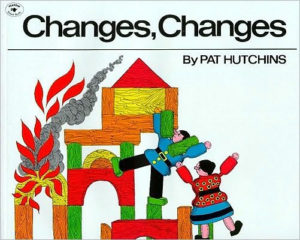 |
In Pat Hutchins’s Changes, Changes (Aladdin, 1987), a charmer of a wordless picture book, a little wooden couple builds a colorful block house – then, as needed, transform it into a fire engine, a ship, and a train. For ages 2-6. |
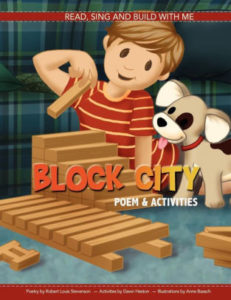 |
Robert Louis Stevenson’s Block City (Simon & Schuster, 2005) is a picture-book version of the poem, with associated building and math activities. For ages 3-7.
|
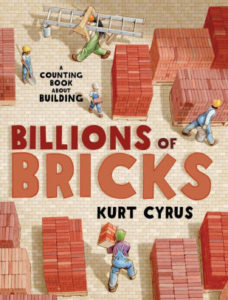 |
Kurt Cyrus’s Billions of Bricks (Henry Holt, 2016) is a clever counting book in which a diverse construction crew builds impressive structures with bricks, in groups of ten, twenty, thirty, and many more. (You’ll also learn how to make bricks.) for ages 4-7.
|
|
Try making your own bricks! (Warning: this is messy. It involves mud.) |
|
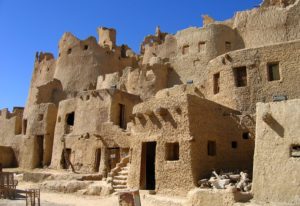 |
Check out these 10 Amazing Mud Brick Buildings.
|
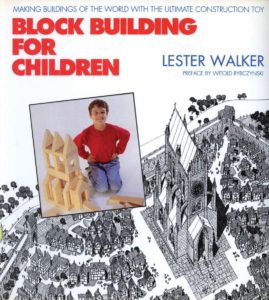 |
Lester Walker’s Block Building for Children (Overlook, 1995) has instructions for building everything from a boat dock to the Emerald City of Oz using 11 different sizes and shapes of wooden building blocks. For ages 7-11.
|
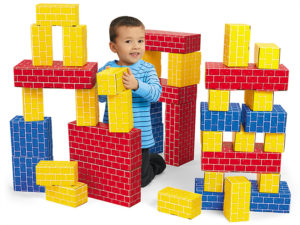 |
Build your own block playhouse! There are many sources for giant heavy-duty cardboard blocks – the biggest are about the size of shoeboxes. They come flat – you have to put them together – but once you do, you’re ready to build big. For ages 3 and up.
|
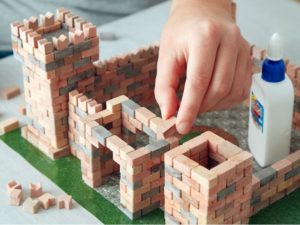 |
Wise Elk’s Building Bricks construction kits use real plaster and ceramic bricks and tiles (tiny ones) and glue to construct castles, towers, the Great Wall of China, and – of course – your own inventions. Try making a mansion for the savviest of the Three Little Pigs. For ages 5 to adult. |
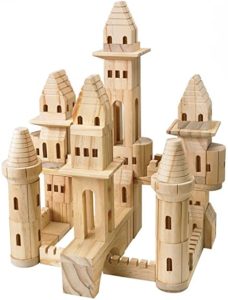 |
Castle blocks – always a hit – are available in many permutations from many toy suppliers. Pair with a catapult. |
=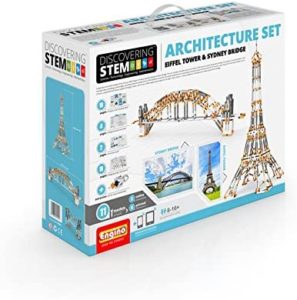 |
With the Engino Deluxe Architecture set, kids can build impressively enormous models of the Eiffel Tower and the Sydney Bridge. Recommended for ages 8-16+.
|
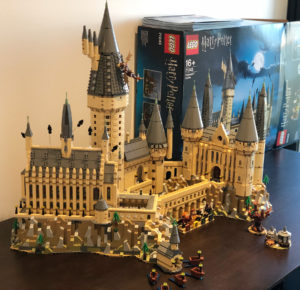 |
LEGOS! From Duplo bricks for beginners to the spectacular 6000+-piece Hogwarts Castle. |
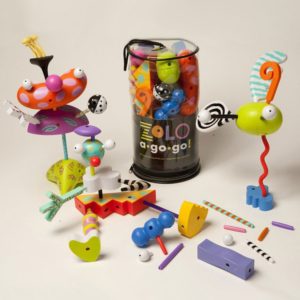 |
For young artists and sculptors, see Zolo for a collection of zany modern art building pieces. (Naming your creations is half the fun.) All ages.
|
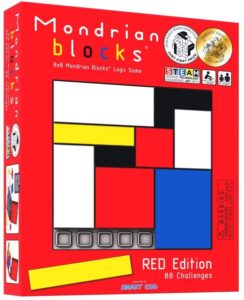 |
With Mondrian Blocks, kids are challenged to reproduce the Mondrian-style painting patterns on challenge cards with colorful blocks.Four difficulty levels; all ages. |
 |
From Learning Resources, Mental Blox is a cool critical thinking game in which kids reproduce stacks, patterns, and multicolored shapes on activity cards using 3-D blocks. For ages 4-8. |
